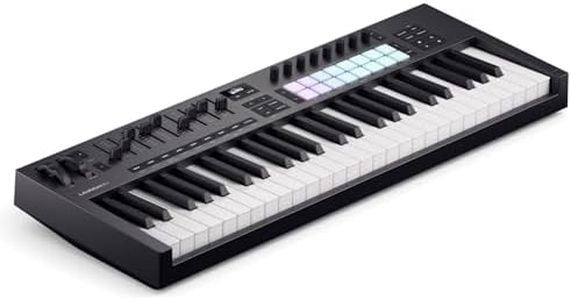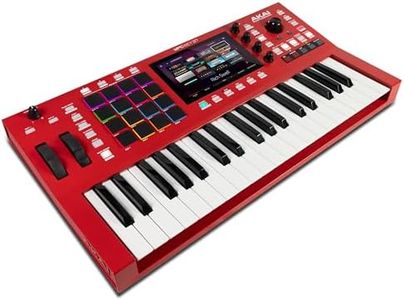10 Best Midi Keyboards 2025 in the United States
Our technology thoroughly searches through the online shopping world, reviewing hundreds of sites. We then process and analyze this information, updating in real-time to bring you the latest top-rated products. This way, you always get the best and most current options available.

Our Top Picks
Winner
Roland FP-10 | Compact 88-Note Digital Piano | SuperNATURAL Piano Tones | Authentic Acoustic Feel Keyboard | Great for Beginners & Experienced Players | Bluetooth & MIDI Connectivity
Most important from
1470 reviews
The Roland FP-10 is an 88-key digital keyboard that offers a rich, responsive tone thanks to Roland's SuperNATURAL piano sound engine. The 88-key hammer-action keyboard with progressively weighted keys provides a realistic piano touch, making it suitable for beginners looking for an authentic playing experience.
Connectivity options are strong, with Bluetooth MIDI for wireless connection to various educational and creative apps, and USB MIDI for easy connection to computers and mobile devices. The included Roland Piano Partner 2 app adds remote control and additional functionality, enhancing the user experience. Build quality is solid, with a sleek design that includes a headphones output for quiet practice, onboard speakers for expressive sound, and optional accessories like a matching stand.
At 27 pounds, it is relatively portable for an 88-key model, though not lightweight. The FP-10 also supports twin piano mode, which is useful for lessons with a teacher. However, as it is corded electric, it requires access to a power outlet. This keyboard is ideal for beginners who prioritize authentic key action and rich sound, but it may not be the best choice for those who need a highly portable option. The Roland FP-10 stands out as a robust entry-level digital keyboard.
Most important from
1470 reviews
Native Instruments S-Series Komplete Kontrol S88 MK3 Keyboard Controller
Most important from
105 reviews
The Native Instruments S-Series Komplete Kontrol S88 MK3 is a high-end midi keyboard designed for professional musicians and producers who want a full 88-key setup with a premium feel. It features semi-weighted keys with polyphonic aftertouch, which means the keys respond realistically to your playing dynamics and can even detect pressure on individual keys for expressive control. Connectivity is straightforward via USB, making it compatible with both PC and Mac systems. One of its standout features is the deep integration with Native Instruments’ own software and other compatible instruments, thanks to the advanced NKS technology. This allows for smooth browsing and tweaking of sounds directly from the keyboard’s bright, full-color screen.
The build quality is solid, with a sleek industrial design made from metal and glass, though it’s on the heavier side at nearly 40 pounds, which might affect portability if you need to move it often. This keyboard is best suited for studio use or musicians who require a professional-grade controller with excellent software compatibility and expressive key action. However, if you’re a beginner or need a lightweight, portable option, this might be more keyboard than you need. The price and complexity also reflect its professional focus, so casual users might find it overkill.
It stands out in key responsiveness, software integration, and build quality but may be less suitable if portability or budget is a priority.
Most important from
105 reviews
Akai Professional MPC Key 61 - Standalone Music Production Synthesizer Keyboard with Touch Screen, 16 Drum Pads, 20+ Sound Engines, Semi Weighted Keys, and Native Instruments Integration
Most important from
104 reviews
The Akai Professional MPC Key 61 is a versatile and powerful standalone music production keyboard suited for professional electronic musicians and producers seeking an all-in-one solution without relying on a computer. It features 61 semi-weighted keys with aftertouch, providing a balance between expressiveness and playability, especially for synth and electronic styles. A 7-inch multi-touch screen, 16 MPC pads, assignable touch strip, and multiple control knobs offer hands-on control over sounds and effects, enhancing intuitive and creative workflow.
Connectivity options include USB, Wi-Fi, Bluetooth, and support for MIDI devices and CV/Gate synths, allowing flexible integration with other gear and software. The MPC Key 61 supports a wide range of software, including major Digital Audio Workstations on Windows and Mac, plus Native Instruments integration to expand creative possibilities. With over 20 sound engines and more than 6000 customizable sounds onboard, it provides a rich palette of tones ranging from drums to orchestral instruments.
In terms of build, it is fairly portable despite its 17.88-pound weight and robust enough for studio and stage use, although heavier compared to simpler MIDI controllers. Storage expandability through an internal SSD slot and 32GB built-in memory enhance its standalone capabilities. While pricier and more complex than basic MIDI keyboards, and constructed with plastic that may not satisfy those seeking a premium feel, the MPC Key 61 is well-suited for professionals who need a standalone, feature-rich production keyboard with extensive controls and sounds, but it might be more than casual players or simple MIDI controller users require.
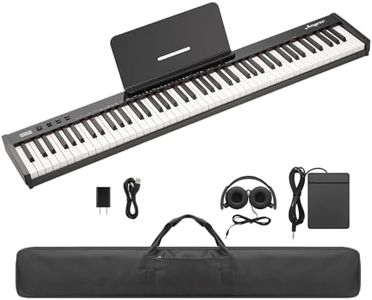




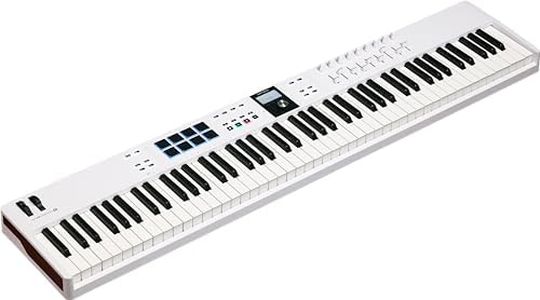
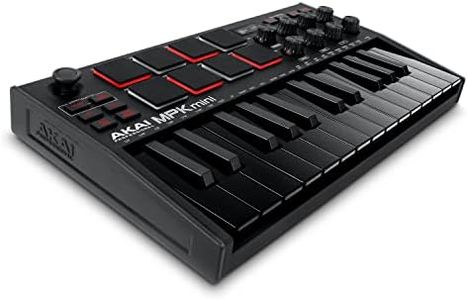
![Case Compatible with Otamatone [English Edition] Japanese Electronic Musical Instrument Portable Synthesizer, Instrumental Music Toy Storage Holder for Otamatone Regular Size (Box Only) (White)](https://images-proxy.bestreviews.guide/0MjSoBfJ9PWf-Jzi673cYrZ_S5A=/0x300/https://m.media-amazon.com/images/I/51IZUiDnynL._AC_CX679_.jpg)






